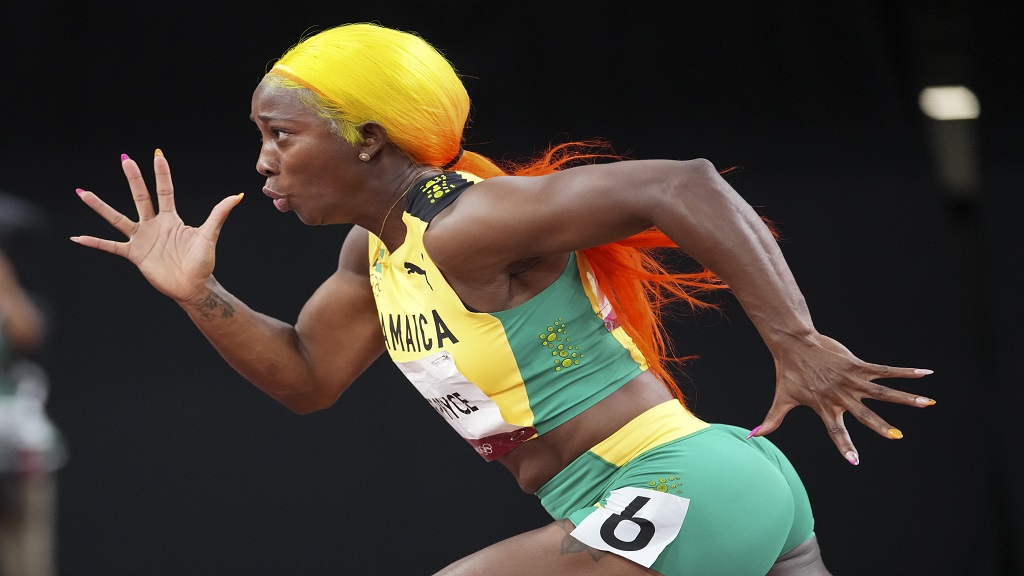
A small segment of the sports world endlessly debates the reasons why track and field is not more popular. Many consider the sport the backbone of the Olympics. In off years, however, it barely holds the attention of even its most ardent fans.
At the recent Brussels Diamond League press conference, Shelly-Ann Fraser-Pryce, a 13x World and Olympic Champion in the sprints, showed the world why track and field doesn’t captivate its fans’ attention. Fraser-Pryce shamelessly displayed a lack of appreciation and comprehension for the intricacies and complexities of an event other than their own. How can a sport thrive if its own athletes don’t value the scope of their fellow competitors’ talents?
No She Didn’t
In a frank exchange, Fraser-Pryce challenged Mondo Duplantis, the pole vault Olympic Champion and World Record Holder, to a 100M match race. Mondo gleefully accepted the challenge and exclaimed he’d bet a lot of money on himself to win. Startled by Deplantis’s hubris, Fraser-Pryce inquisitively asked Duplantis, “Explain to us how sprinting and the Pole Vault work?”

Duplantis went on to educate Fraser-Pryce that sprinting was integral to his event. He calmly corrected her that his runway approach was forty-five meter not ten or fifteen and that he posted some pretty swift 100M times in high school. In fact, his 100M PB of 10.57 in high school is faster than her 10.60 PB.

Nothing really changes. Years ago when I competed on the circuit, two friends who competed in the field events gathered their gear to leave the stadium in the middle of the all-time great Said Auiota’s 3000M race. I was shocked and shouted to coaxed them to watch the race, “Auiota is on world record pace. He’s running close to four minute miles and you’re leaving? One of my buddies replied, “Ray, I don’t understand anything over the 800M.”
The drift of our fans is because the sport is too damn complicated. Yes, all the winner has to do is jump or throw the farthest or run the fastest. On the other hand, the sport makes no sense if one doesn’t understand or appreciate the beauty within each event.
How Hard Can It Be?
Casual fans don’t understand how speed is just as important as “hops” for the high jump or that shot putters traditionally score the best on the vertical leap test compared to all other track and field athletes . Subsequently, fans only care for about thirty percent of a two hour event. How can a track meet be relevant if fans aren’t captivated by more than fifty percent of the show?
This fact makes the Duplantis vs Fraser-Pryce match race a brilliant idea. It bridges the sexs and events. The race tells a fascinating story. Most importantly, it is a legitimate competition. The challenge may have been orchestrated but it’s okay with me. Anything tasteful to call attention to our sport is a victory.

Remember Bobby Riggs was fifty-five when he played the twenty-nine year old Billie Jean King in the Battle of the Sexes. Duplantis vs Fraser-Pryce are at the top of their games. Their race would teach the world what sprinting has to do with the pole vault and how phenomenal all track and field athletes are.
It’s a Throwback
The proposed Duplantis vs Fraser-Pryce contest also reminds me of a stunt from the days of the Profesional Track Circuit of the 1970’s. At the end of competitions, the 6’5 and 275lbs shot put world record holder, Brian Oldfield, would race the winner of the women’s 100M race in a 55 yard dash. Oldfied won every time. What does sprinting have to do with the shot put?
Every track event is about a transfer of energy which is driven by speed. Oldfield threw the shot put with his legs not his arms. His leg speed allowed him to generate the power to thrust the shot put to world records. Duplantis’ flight down the runway creates the energy needed to propel him over the crossbar. His vault is like an airplane taking off. No speed, no lift, no flight and no height.
Bring it on. I haven’t been to Brussels in years. I can’t wait.
